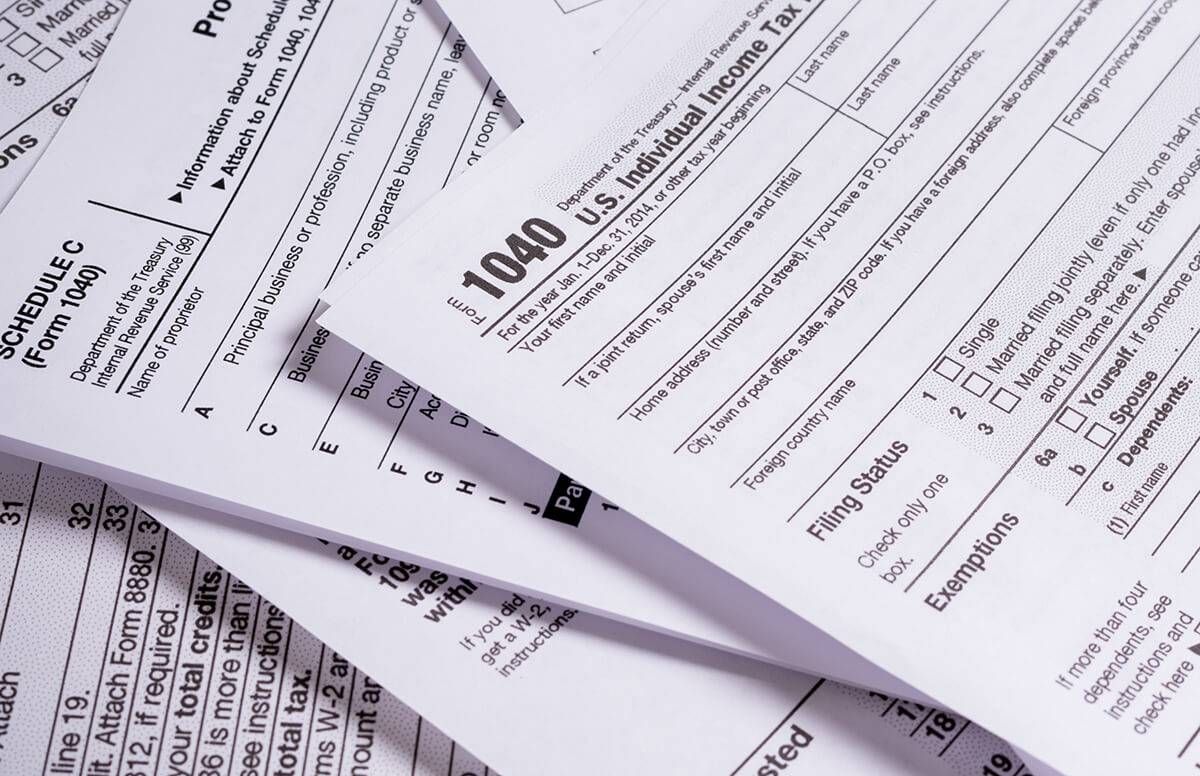Don't Make This Big Tax Mistake After a Parent's Death
His family nearly overpaid the IRS $12,000 due to the step-up rules
I’d like to share a personal story about the huge tax mistake I made after my father passed away. Hopefully, once you learn about it, you’ll avoid making the same goof.

When my dad died from complications of heart valve surgery in 2002, most of his assets, and my mother's, were neatly bundled into IRAs and revocable trusts. Every year since then, I've helped Mom gather her tax documents, compile the deductible medical bills and pass everything to her accountant who does her magic handling the complex trust taxes.
Dipping Into Mom's Principal to Pay Her Health Bills
About five years ago, my mother's health deteriorated. She suddenly needed round-the-clock care and was expected to live six months or less. My two brothers and I agreed she should have the best care possible, which meant dipping into her principal; previously, she’d been doing fine on portfolio interest alone.
In June 2017, against all odds, we celebrated Mom's 99 birthday. Her condition remained fragile, but her health was stable and her mind sharp, despite spending most of the past five years in hospice. Her portfolio, however, wasn't doing as well.
In 1974, when her mother died, Mom had inherited a modest bundle of blue-chip stocks. Largely untouched, and with 40+ years of compounding, they'd grown to the point where some of the positions were more than 90 percent appreciation. Mom had every intention of passing these assets to her children, knowing that on her death, the cost basis [the original value for tax purposes] would reset to the value of the stocks when she died. A similar tax benefit occurred when she inherited them.
The 'Step-Up' Provision of the Tax Code
This "step-up" provision of the tax code makes a huge difference in the tax liability of these kinds of holdings. Without the step-up provision, inherited assets would carry heavy (often tough-to-calculate) tax consequences.
For instance, imagine inheriting 100 shares of stock in 1974 that were trading at $10 a share. And assume that after a number of stock splits, these holdings have grown into 800 shares trading at $50 apiece, a gain of $39,000. Without a step-up, and assuming using the 15 percent capital gains rate, a $5,850 tax liability would be incurred upon the sale of the stocks. By contrast, with the step-up, there’d be essentially no tax liability.
A Frightening Tax Bill
Now, back to my story: In 2015, our family began selling the legacy assets. I knew the history of these stocks and could see the huge gains on the brokerage statements. The 2015 tax bill was frightening.
It was painful in 2016 to have to write large quarterly payments to the Internal Revenue Service (IRS) and state department of revenue while Mom’s assets were diminishing and her health care costs were rising. At the end of 2016, I printed out the brokerage statements and sent them to our accountant.
At this point, however, the accountant realized something was off, and I gained a quick lessons in something called the "double step-up" in cost basis.
The shares my mother inherited had been placed in a joint living revocable trust. In such a trust, the death of one of the owners (my dad) triggers a reset of cost basis. Translation: Instead of paying gains on the 1974 stock price, we should have been paying gains on the January 2, 2002 price, the date of my father's death.
Getting a $12,000 Tax Refund Check
Fortunately, the mistake was largely confined to 2015. I then began activating the brokerage firm to recalculate the cost basis and we prepared to file an amended 2015 return. In June, my mom received a refund check for 2015 for $12,000!
The double step-up means any remaining trust assets will have a second cost-basis step-up upon my mother's death.
Fortunately, we were within the IRS’ three-year tax refiling window and could recoup our overpayments. But not all such errors are correctable. Nor was our trust mistake the only potential error that tax filers make with regard to step-up benefits.
Stepping Into Costly Step-Up Mistakes
When I spoke with Sheryl Rowling, a CPA and Personal Financial Specialist at Rowling & Associates in San Diego, she told me plenty of stories of clients who’d made costly step-up mistakes. One elderly man had added his son as a joint owner on his brokerage account, thereby halving the step-up benefit upon his death.
Another sad story involved an elderly woman with a highly appreciated California house who decided to add her nearby daughter as joint owner. Say this house had appreciated from the $100,000 purchase price to $1 million. When the mother passed away, the daughter became full owner, but as half owner, she received only half of the step-up. If she sells the house for the $1 million, she’ll be responsible for $450,000 of gain — a combined federal and state tax whammy of some $90,000, which could have been entirely avoided.
The Future of the Step-Up Tax Break
Resetting the cost basis of assets is a powerful tax benefit. Over the years, various tax proposals have called for eliminating this break. And it's possible that step-up could be on the tax reform chopping block later this year.
For now, however, it remains one of the underappreciated benefits of trusts and is a powerful means of efficient intergenerational wealth transfer. Understanding how step-up works can help avoid the kind of mistake we made when we began paying taxes for gains that weren't really there.

